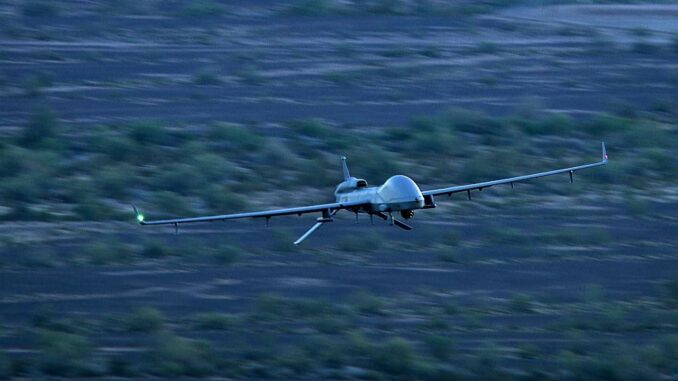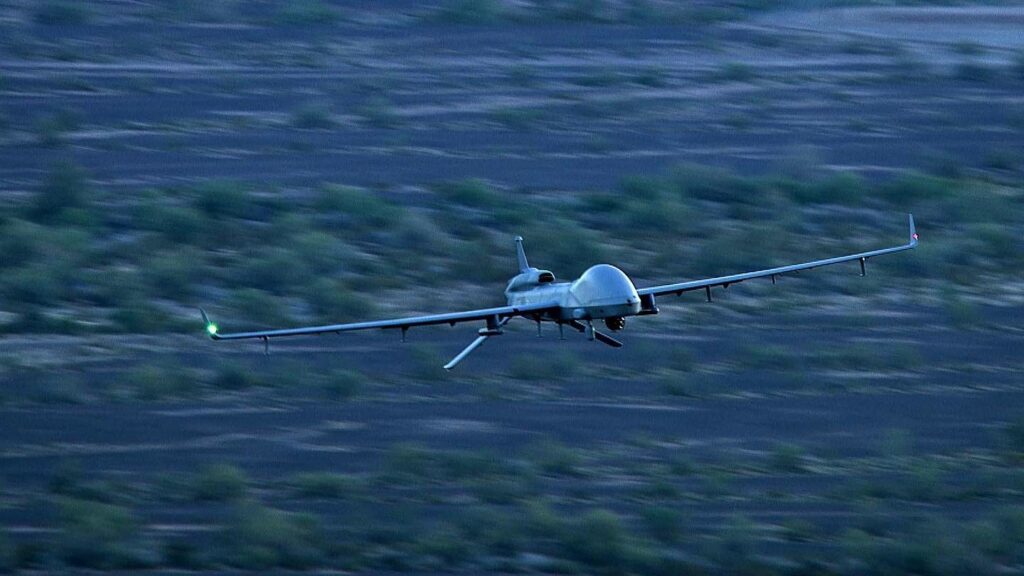
SkyRange, with its unmanned Range Hawks, increases the pace of hypersonic flight testing, marking a significant breakthrough for defense.
In an age when speed and maneuverability at speeds above Mach 5 have become critical parameters for military supremacy, the Pentagon’s SkyRange program stands out. Using a fleet of three sensor-equipped Range Hawk UAVs, this program represents a new, flexible capability for hypersonic flight testing. Previously, limited ground infrastructure meant that tests were spaced out and complex, sometimes requiring months to reposition. The introduction of SkyRange now makes it possible to carry out tests in considerably reduced timeframes, marking a significant advance in hypersonic testing. This article explores in detail the SkyRange program, its background, technical implications and future implications for defense and research.
SkyRange and its Range Hawks: a new era in aerial testing
SkyRange, operational since last year, has enabled the Pentagon to support two hypersonic flight tests in just 10 days, one over the Atlantic Ocean and the other over the Pacific. These drones, based on decommissioned RQ-4 Global Hawks models, have been converted to track airborne systems. The SkyRange program illustrates not only an improvement in flexibility and speed of testing, but also a breakthrough in the use of unmanned aircraft for critical missions.
The Range Hawks that make up the SkyRange fleet are former Block 10 models of the Global Hawk, reconfigured to track airborne systems with precision. In 2023, SkyRange supported 10 hypersonic flight tests and expects to support more than 15 the following year. Increasing this rate of flight tests is a major objective for the US Department of Defense, which is aiming for around one test per week.
The investment in SkyRange goes beyond simply increasing the number of tests; it is a transformation of test methodology, enabling more frequent and flexible validation of hypersonic technologies. This includes validation of individual systems, advanced materials and other technologies critical to the development of hypersonic weapons and aircraft.

The Strategic Importance of Hypersonic Testing
Increased interest in hypersonic technologies is driven by their potential to revolutionize modern warfare. Capable of traveling at speeds in excess of Mach 5, these vehicles represent not only a development challenge, but also one of testing and validation. The current geopolitical context, marked by heightened tensions between major powers, makes accelerating these developments essential.
SkyRange is a response to these challenges. Before SkyRange, hypersonic vehicle testing was limited by land and sea infrastructures, making test planning and execution time-consuming and laborious. The arrival of Range Hawks offers a more agile and responsive solution, reducing the time between conception and deployment of these technologies.
Implications and future of hypersonic testing
The implementation of SkyRange and the growth of the Range Hawks fleet have several major implications. On the one hand, it will accelerate the development and deployment of hypersonic weapons, thereby boosting defense capabilities. On the other, it raises questions about safety, risk management and the strategic implications of a hypersonic arms race.
The acceleration of testing is also influencing the international defense R&D landscape. U.S. partners and adversaries will be watching and may adjust their own programs in response to this increased hypersonic testing capability.
Beyond SkyRange: continuous innovation
Beyond increasing test rates, the SkyRange program is accompanied by investment in other initiatives such as the Multi-Service Advanced Capability Hypersonics Test Bed (MACH-TB) and the Hypersonic and High-Cadence Airborne Testing Capabilities (HyCAT) program. These efforts are aimed at creating flying test beds and integrating emerging technologies in the hypersonic field, underlining the company’s ongoing commitment to innovation and improved test capabilities.
The SkyRange program and its fleet of Range Hawks mark a significant step forward in the United States’ ability to test and develop hypersonic technologies. This increase in the pace of hypersonic testing not only strengthens the United States’ strategic position, but also raises important questions about the future of international security and modern warfare. The future is likely to see a continuation of these efforts, with increased focus on the implications and challenges that these advanced technologies present.
War Wings Daily is an independant magazine.